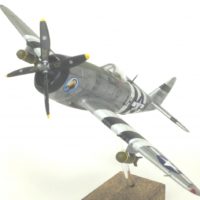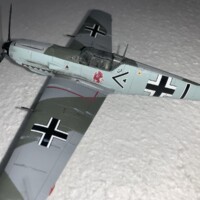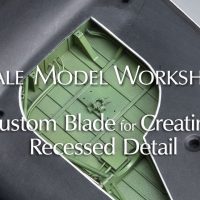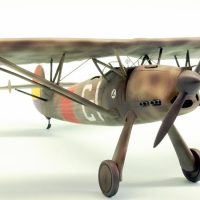How Khrushchev shot down an aeroplane with a single flippant remark, or: the remarkable story of the Tupolev Tu-91 ‘boot’
For an aircraft of which just one single prototype was built and which was never to go into series production, the Tu-91 has a considerable number of nicknames: ‘Byk' (bull) was the official name, but the name ‘Botshka' also became established, which means ‘barrel' in reference to the exterior of the massive aircraft. Although there was to be only one Tupolev Tu-91, the design itself generated so much international resonance that NATO came up with its own code name, ‘Boot'. The Tupolev Tu-91 had indeed caused a sensation - and its existence was not to remain without consequences, as will be shown later.
The design was created at the end of the 1940s against the background of a planned expansion of the Soviet navy. Reflecting on the role that US carrier ships had played in the Pacific War, Stalin demanded not only the construction of new and more battleships but also the acquisition of a Soviet aircraft carrier fleet of its own. One of the consequences of this demand was, of course, the development of carrier-capable aircraft, a previously undeveloped field in the Soviet Union. The Tupolev design office was given the task of developing a ship-based heavy attack aircraft, and Vladimir Chizhevski, chief designer at Tupolev, was put in charge of the project.
With the development of carrier-based aircraft, the Soviet Union was breaking new ground. It is therefore doubly interesting to see what paths were taken to open up this new territory!
The Tu-91, which first flew in May 1955, demonstrated the successful Soviet concept of a ‘flying tank': with a crew compartment protected by sufficient steel and armoured glass and effective armament in the form of a total of three 23mm Afanasyev-Makarov AM-23 automatic cannons and 1500 kg of launch weapons, the Tu-91 was in the tradition of the Il-2 and Il-10 ‘flying tanks'.
In addition to the aforementioned role as a combat aircraft for use against sea and ground targets, a pure submarine fighter and an ECM version were also planned.
A 7762 hp PTL-Kusnetzow TW-2M propeller turbine served as propulsion, which enabled the 14,000 kg construction to reach a cruising speed of 650 km/h. Equipped in this way, a range of 2400 kilometres could be expected. A closer look at the engine shows that the Tu-91 not only continued traditions as an armoured combat aircraft, but also had highly innovative features. The turbine's seven and a half thousand horsepower was transmitted to two counter-rotating propellers via a long shaft whose shaft channel divided the cockpit in two lengthways. Both inside and outside the cockpit, this innovative feature characterised the appearance of the Tu-91.
After Stalin's death, however, the plans for a Soviet carrier fleet were soon to be laid to rest. Nevertheless, work on the Tu-91 continued, which was probably also due to the favourable performance parameters that were becoming apparent. The end of the aircraft carrier career meant that the already heavy aircraft had to be lightened considerably: the wing folding mechanisms and the catch hook at the rear of the aircraft were removed. The short distance that the Tu-91 needed to take off and land was retained as a legacy of the original concept as a carrier aircraft: the aircraft took off after a good 500 metres and needed around 550 metres to land.
During flight tests, the Tu-91 was described as surprisingly manoeuvrable, although it was stable in the air. Retrofitted boundary layer fences on the wings were the only improvement deemed necessary as a result of the flight tests. After the tests on the ground also went satisfactorily, the ‘Byk' was ready for the start of series production. Assembly was to take place at Plant No. 31 in Tbilisi, Georgia.
In this state of affairs, the Tu-91 ‘Byk' was part of an exhibition of the latest military aircraft arranged for the Soviet leadership in mid-1956. The following is said to have taken place: Nikita Khrushchev is rumoured to have made fun of the Tu-91's strange appearance in view of its bulky shape. In response to a subsequent question as to what this strange design was good for, he received the misleading answer from the accompanying officials that the aircraft could ‘fulfil the tasks of a heavy cruiser'. What was meant was that the Tu-91 had the firepower of a heavy cruiser, but Khrushchev took the answer literally - and formulated a verdict that would indeed spell the end for the Tupolev Tu-91: ‘But we don't need any more heavy cruisers'.
Remarkably, this meant that only one Tupolev Tu-91 was built and used in flight tests, in addition to a second aircraft that had been nearing completion when the project came to an unforeseen end.
At the beginning of the text I wrote that the Tu-91, although it never went into series production, nevertheless made an impact. In fact, the USA reacted with great alarm to the news of a new, powerful Soviet combat aircraft. Reinforced by the experience gained in Korea and later in Vietnam, it was realised that a heavily armoured and massively armed attack aircraft would be a necessity in contemporary and future conflicts. This gave rise to the development of projects such as the Northrop YA-9 and the Fairchild-Republic A-10, which was subsequently built in series. In the Soviet Union, this line of development continued with the unrealised Il-40 and the Sukhoi Su-25, which is still flown today.
About the kit and building process
As far as I know, Modelsvit is the only supplier of this exotic aircraft. I already know several kits from this manufacturer and can say: this is not the worst offer from Modelsvit!
The accuracy of fit is actually quite good, but this quality only comes to the fore once the parts have been trimmed and the fish skin removed. Unfortunately, almost all components require this time-consuming procedure. However, once you have come to terms with this, the construction is quite uncomplicated and does not present any major challenges.
In addition to the large amount of fish skin and the consistently rough moulding of the parts, I only noticed one other negative aspect: the clear parts are also thickly moulded and therefore unfortunately not very transparent. The only remedy would probably have been a self-made moulded cockpit part, which I did not do here.
Care must also be taken when fitting the two lower bow windows. Under no circumstances should you wait until the two halves of the fuselage are closed, as you must be able to check and correct the fit of the window surfaces from the inside and outside at the same time until the transparent adhesive used has ‘tightened'.
Conclusion
As in reality, my collection will probably remain with a single Tu-91 ‘Byk' built - although it would be attractive to stage the peculiar charm of the ‘Byk' flying, i.e. with retracted landing gear and rotating propellers. Well, when I think about it: who knows, maybe I will realise it like this again! I would have liked the kit itself well enough for that in any case!





























Model looks really nice..the story is reminiscent of pieces on aviation done by Ukrainian YouTuber titled Paper Skies..lots of fun…hope I haven’t bent the rules too much with the reference..anyway, your model does look striking and well photographed.
Well-done build & finish on what appears to be one big bad-a-- aircraft.
Well, that's something you're not going to see every day. Great work to get that result.
Well done, Roland! An excellent model and a great article for a type I had no idea it existed!
Well done!
Well done, very interesting aircraft.
Great result of an interesting aircraft, Roland @rosachsenhofer
Thanks a lot for sharing this great article.
Very unusual, and a nicely built model - well done!
Glad to learn about another aircraft i never heard off- your build looks great, and the metallic finish is fantastic!
The planform of the aircraft actually reminds me very much of the A-6!
This is really a great model. I love these "almost got there" plane stories, another example being the Martin Seamaster.
I didn't know about this plane at all. Very interesting article and beautifully built model.
Thank you all very much for your words, your thoughts and your interest - as always, it is very welcome and highly motivating - thank you!